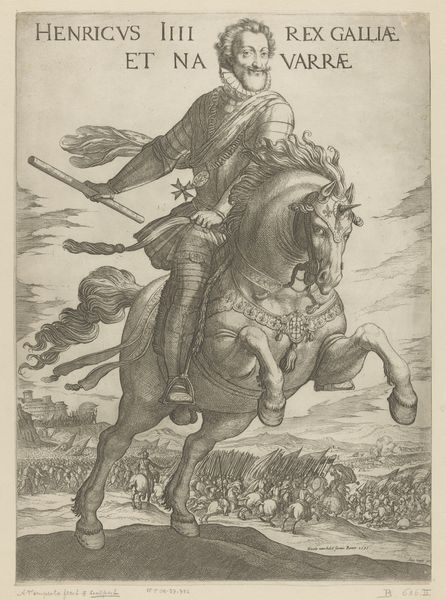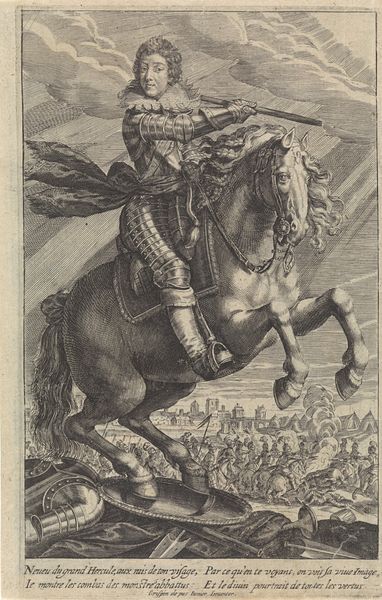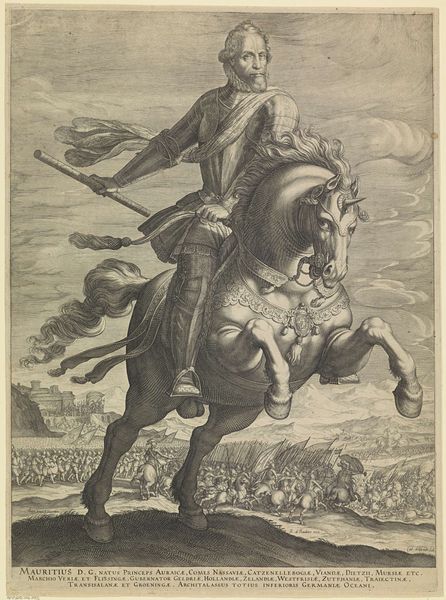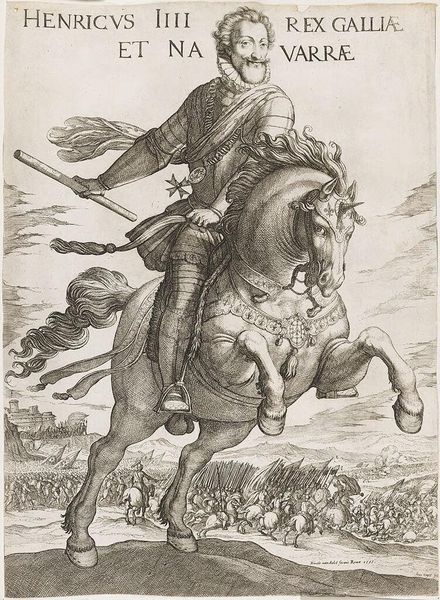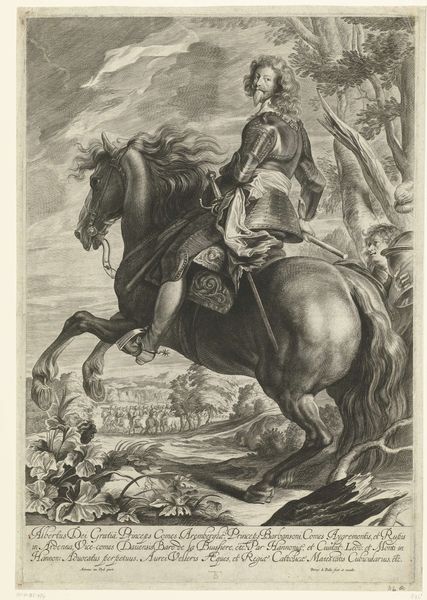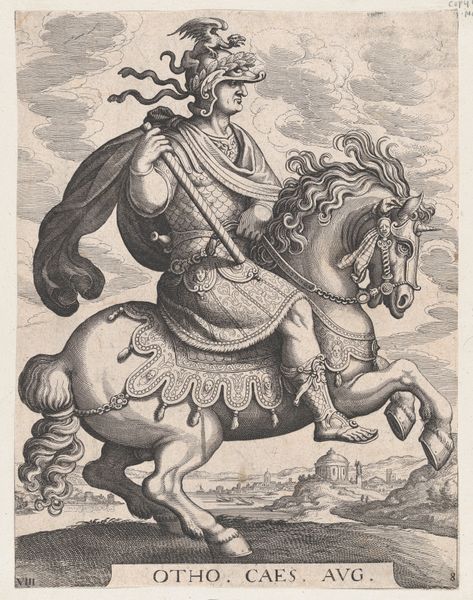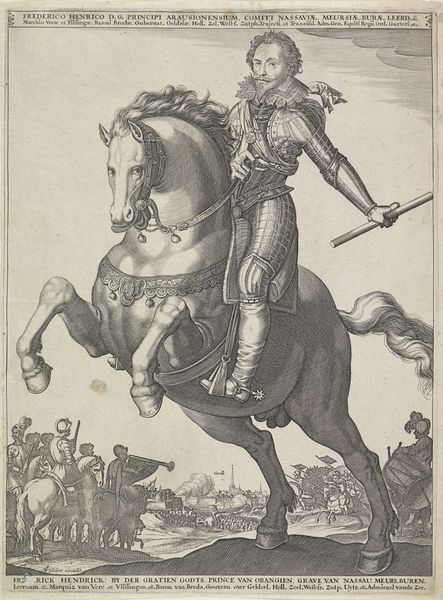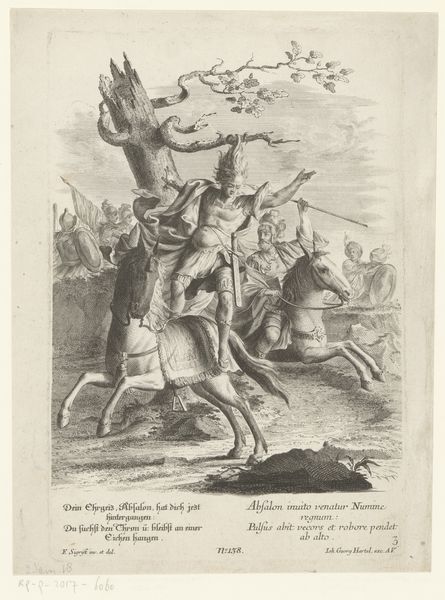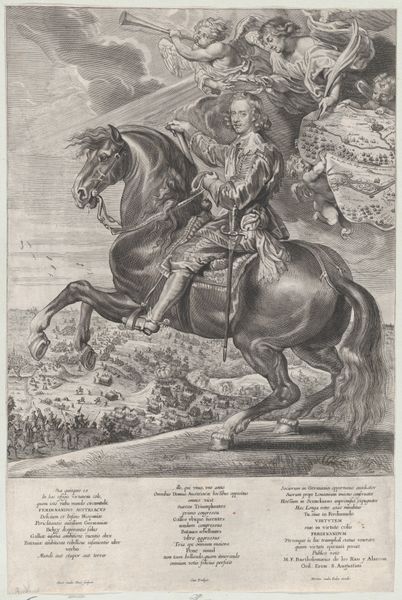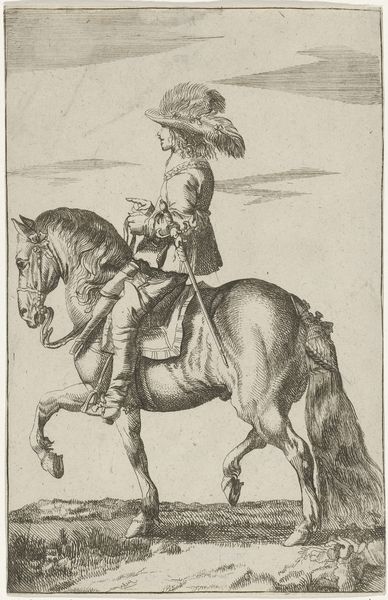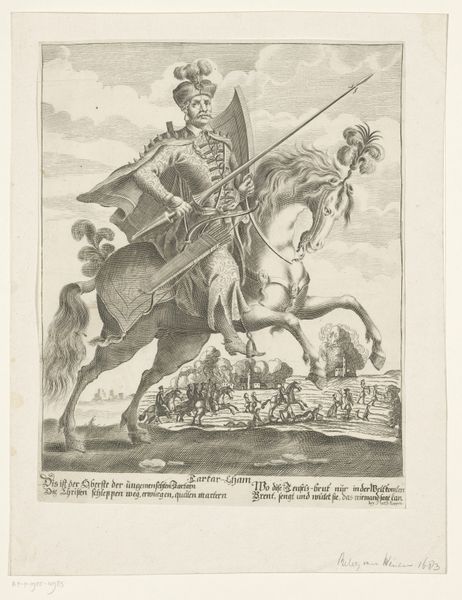
print, engraving
#
portrait
#
baroque
#
dutch-golden-age
# print
#
pen sketch
#
figuration
#
line
#
history-painting
#
engraving
#
realism
Dimensions: height 338 mm, width 249 mm
Copyright: Rijks Museum: Open Domain
Curator: Before us is a print dating back to 1600, entitled "Equestrian Portrait of Maurice, Prince of Orange". It resides in the Rijksmuseum. Editor: It’s powerful. The sheer scale of the horse and rider, particularly contrasted with the tiny figures in the background, projects an image of dominance. You immediately understand who holds the power here. Curator: The engraving technique, with its intricate lines, shows not just realism, but elevates it. I’m drawn to the subtle narratives implied, given his positioning during that period. What do you make of it? Editor: I think it's really important to recognize how much material went into the production. The engraver spent a significant amount of time translating brushwork and the texture into lines and this highlights the consumption of the prints and how they functioned to create specific identities. Curator: Precisely. The very act of producing and distributing these prints served a clear purpose: the solidification of Prince Maurice’s image and legitimacy during a turbulent time in Dutch history. The print format makes his image far more widely accessible than a unique painting. Editor: Agreed, and also looking at his armor… the labor and expertise to craft it must have been immense! The visual precision serves as an intentional contrast to the chaos happening within the print as a whole. What would you call the style here, out of curiosity? Curator: A definite blend, but it feels mostly rooted in the Dutch Golden Age, infused with elements of Baroque dynamism and infused with touches of realism. But those distinct styles served a political purpose. Editor: Very true. Looking closely reveals an intricate, yet stark contrast between luxury and the reality of the war portrayed below. Curator: It’s interesting how a single image can embody such layered historical context and artistic ambition, reflecting not just aesthetic sensibilities but also socio-political forces. It provides an entry point into understanding questions about legacy and power. Editor: Agreed, and considering it from a materials perspective allows us to remember that the paper and ink carry their own weight in conveying status and ensuring accessibility to an otherwise elite class of society.
Comments
No comments
Be the first to comment and join the conversation on the ultimate creative platform.
